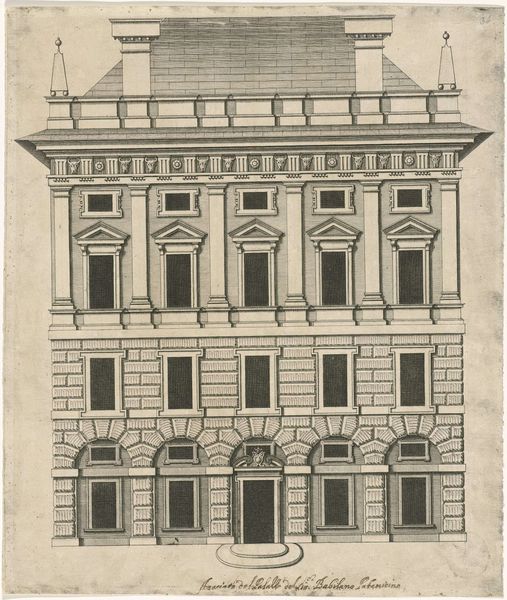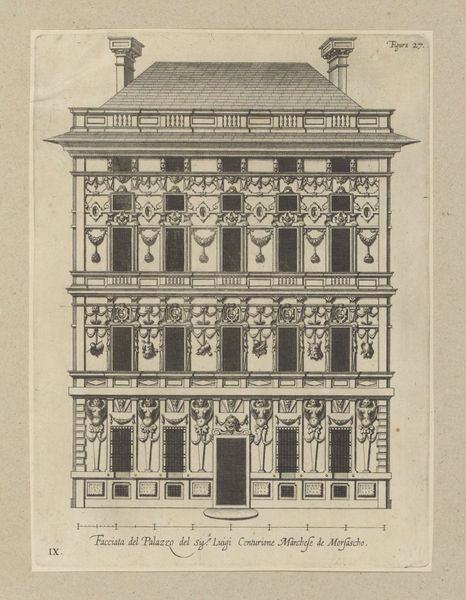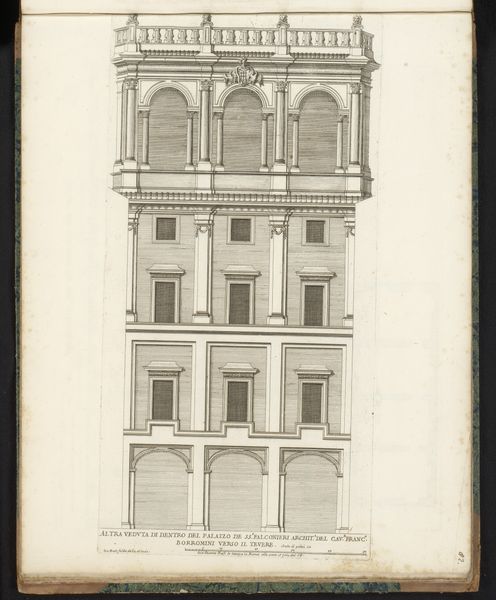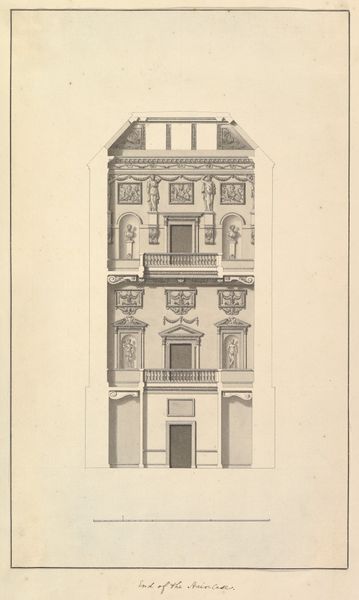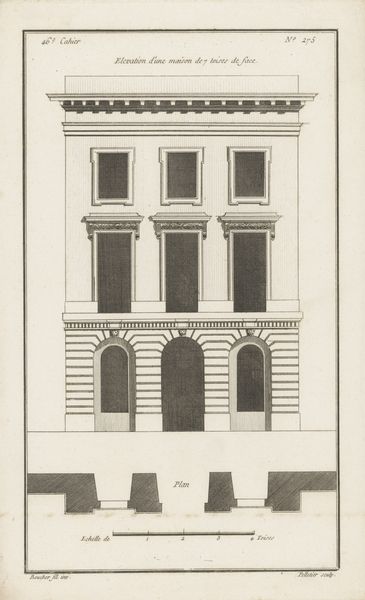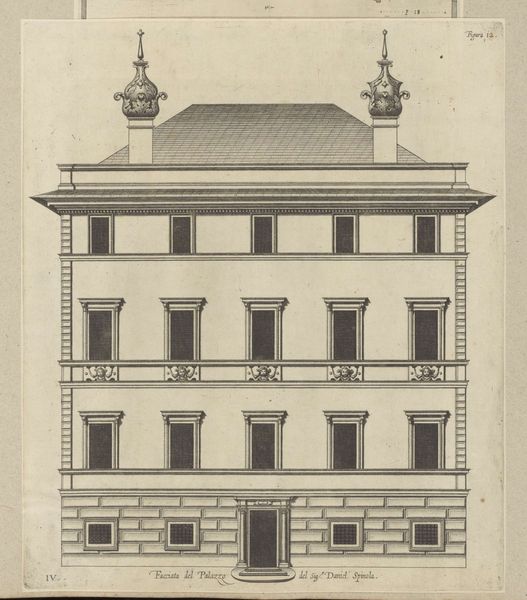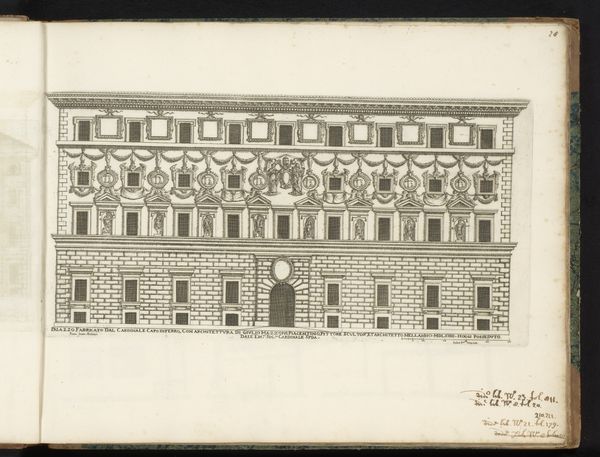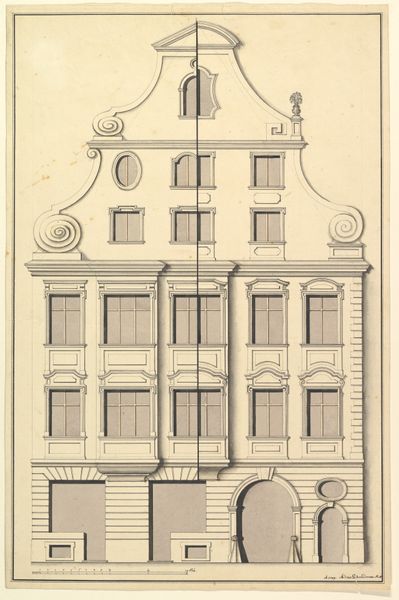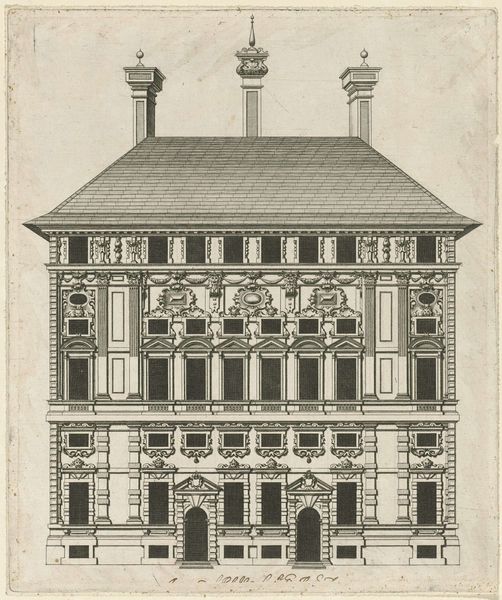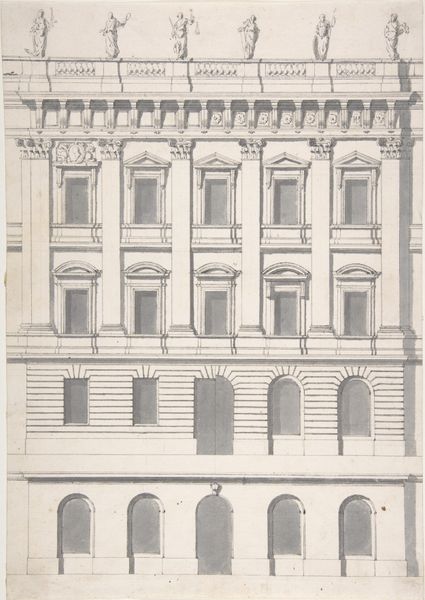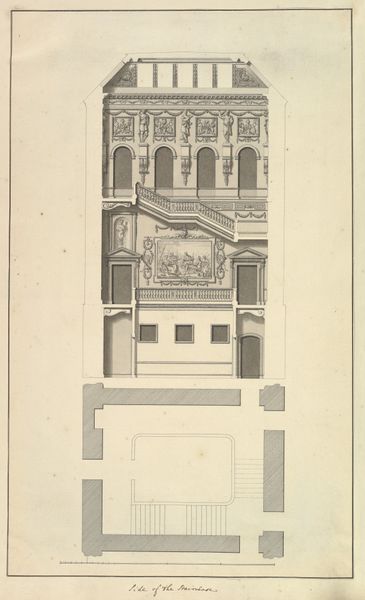
print, etching, engraving, architecture
#
aged paper
#
toned paper
#
baroque
# print
#
etching
#
old engraving style
#
classical-realism
#
perspective
#
form
#
personal sketchbook
#
geometric
#
pen-ink sketch
#
ink colored
#
line
#
pen work
#
sketchbook drawing
#
cityscape
#
italian-renaissance
#
sketchbook art
#
engraving
#
architecture
#
columned text
#
building
Dimensions: height 404 mm, width 312 mm
Copyright: Rijks Museum: Open Domain
Editor: This etching, "Palazzo Centurione Cambiaso" by Nicolaes Ryckmans from 1622, depicts a very symmetrical building. I am struck by its rigidity and formality. How do you interpret this work? Curator: It’s more than just a depiction of architecture; it’s a statement about power and social hierarchy. The Palazzo, rendered with such precision, speaks to the Centurione Cambiaso family’s status in Genoese society. Consider the role of these grand buildings within the urban fabric. Who were they designed to impress? Who was excluded? Editor: I suppose it's not really about domestic comfort then? More about projecting power through architectural design? Curator: Precisely! The architectural choices - the height, the symmetry, the decorative elements - served as visual markers of class and influence. Ask yourself, what did it mean to control the spaces of a city and shape its visual landscape in the 17th century? How did architectural design support a culture of elitism? Editor: It is almost like architectural propaganda in a way. Were there dissenting architectural voices at this time? Curator: Some architects proposed more egalitarian designs but faced challenges in securing commissions and resources. Remember, art and architecture rarely exist in a vacuum. They reflect the complex interplay of social, economic, and political forces. So how might our contemporary architecture be viewed from that perspective? Editor: This has totally shifted my understanding. It is not just a building; it embodies the values and power structures of its time. Now, I wonder who lived there and what their lives were like. Curator: Exactly! This etching serves as a great tool, enabling critical questions about the relationship between art, architecture, and social justice.
Comments
No comments
Be the first to comment and join the conversation on the ultimate creative platform.
